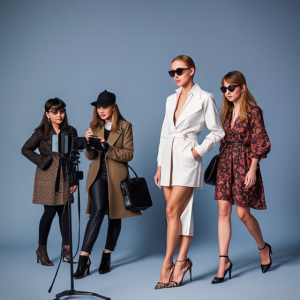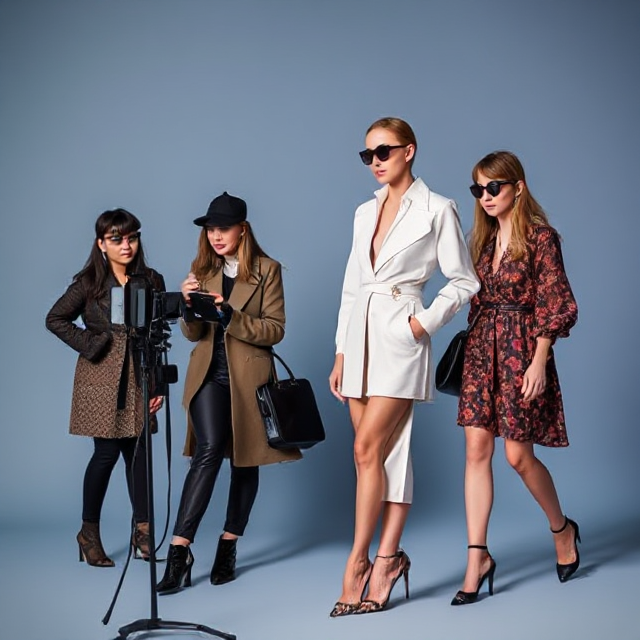
In the fast-paced and ever-evolving world of fashion, public relations (PR) plays a pivotal role in shaping a brand’s image and ensuring its success. Fashion PR strategies are essential tools for enhancing visibility, building a loyal customer base, and fostering meaningful relationships with key stakeholders. Whether you are a well-established fashion house or a startup brand looking to make your mark, understanding the ins and outs of effective fashion PR can set you apart from the competition.
1. The Importance of Fashion PR
Fashion PR goes beyond the traditional notion of promoting clothes and accessories. It is about creating an identity, telling a compelling story, and connecting with audiences on an emotional level. Fashion PR involves a variety of strategies, from media relations and influencer marketing to event planning and social media management. The core goal is to build and maintain a strong, positive public image that resonates with both consumers and industry insiders.
A successful fashion PR strategy can:
- Boost brand visibility in a crowded marketplace.
- Enhance reputation through positive media coverage and celebrity endorsements.
- Build relationships with journalists, influencers, stylists, and bloggers.
- Engage customers through creative and impactful communication.
2. Key Elements of a Fashion PR Strategy
A well-rounded fashion PR strategy encompasses several key elements, each designed to elevate the brand’s presence and influence. Let’s explore these essential components:
A. Media Relations
One of the cornerstones of fashion PR is building strong relationships with journalists, editors, and fashion writers. Media coverage plays a vital role in driving brand awareness and credibility. PR professionals should work to secure editorial placements in top fashion publications, websites, and blogs.
Effective media relations include:
- Press Releases: Well-crafted press releases that provide clear, concise, and engaging information about new collections, brand launches, or collaborations.
- Pitching Stories: Tailoring pitches to individual journalists or outlets based on their specific readership or content focus.
- Media Kits: Creating digital or physical press kits containing high-quality images, background information, and key brand details.
- Press Events: Hosting exclusive events or product launches that attract the right media attention.
B. Influencer Marketing
In the digital age, influencers are among the most influential voices in fashion. Collaborating with influencers, bloggers, and content creators can significantly boost a brand’s reach, especially among younger audiences. Fashion PR strategies should incorporate influencer partnerships to enhance brand visibility.
Key strategies for influencer marketing include:
- Identifying Relevant Influencers: Choosing influencers whose personal style aligns with the brand’s identity.
- Authentic Engagement: Collaborating with influencers to create genuine, organic content that resonates with their followers.
- Campaign Tracking: Monitoring the performance of influencer partnerships and tracking ROI (return on investment) to refine future strategies.
C. Event Planning and Management
Fashion events such as runway shows, pop-up shops, product launches, and exclusive brand parties are essential components of any fashion PR strategy. These events provide opportunities for brands to engage with the press, influencers, and consumers in a memorable way.
Successful event planning involves:
- Curating a Unique Experience: Creating a memorable, immersive event that captures the essence of the brand.
- Guest List Management: Inviting key influencers, celebrities, journalists, and fashion industry professionals to attend and generate buzz.
- Event Coverage: Ensuring proper media coverage of the event, including photos, videos, and social media posts.
D. Social Media Management
Social media is an indispensable tool in modern fashion PR. Platforms like Instagram, TikTok, and Twitter allow brands to engage with their audience directly, share content, and build a community around their products and values.
Fashion brands should focus on:
- Consistent Branding: Maintaining a cohesive visual identity across all social media platforms.
- Engaging Content: Posting a mix of content such as behind-the-scenes looks, fashion tutorials, styling tips, and user-generated content.
- Influencer Collaborations: Leveraging influencers to promote the brand in a way that feels natural and authentic.
- Hashtag Campaigns: Creating branded hashtags to encourage user participation and increase brand visibility.
E. Crisis Management
In the fashion industry, a PR crisis can arise from various issues, such as controversial designs, inappropriate behavior, or supply chain disruptions. A crisis management plan is crucial for handling these situations effectively and protecting the brand’s reputation.
Key tactics for crisis management include:
- Immediate Response: Addressing the issue swiftly and transparently with a clear statement or apology if necessary.
- Open Communication: Maintaining open lines of communication with the media, stakeholders, and customers to provide updates and resolve concerns.
- Learning from the Crisis: Using the experience as an opportunity for growth and ensuring similar issues do not arise in the future.
3. Tailoring PR Strategies for Different Fashion Segments
Each segment of the fashion industry—whether high-end couture, streetwear, or fast fashion—requires a tailored PR approach. Understanding your target audience and brand positioning is key to crafting a successful PR strategy.
- Luxury Fashion PR: Emphasizes exclusivity, elite events, and personalized experiences. Media relations are highly selective, and the focus is on high-profile editorial placements and endorsements from high-profile celebrities.
- Streetwear and Casual Fashion PR: Relies heavily on influencer marketing and social media engagement. Streetwear brands often utilize viral campaigns and collaborations with well-known figures in pop culture.
- Fast Fashion PR: Focuses on affordability and trendiness, with campaigns revolving around product launches, collaborations with influencers, and high-frequency social media content.
4. Measuring the Success of a Fashion PR Strategy
To determine the effectiveness of a fashion PR strategy, it’s essential to track key performance indicators (KPIs). Common KPIs in fashion PR include:
- Media Coverage: The amount and quality of press coverage the brand receives, including mentions, articles, and interviews.
- Social Media Metrics: Engagement rates, follower growth, and the success of hashtag campaigns.
- Influencer ROI: The impact of influencer collaborations on sales, brand awareness, and engagement.
- Event Success: The number of attendees, media coverage, and social media mentions generated by fashion events.
Fashion PR is an indispensable part of building a successful fashion brand in today’s competitive market. By strategically leveraging media relations, influencer marketing, events, social media, and crisis management, fashion brands can elevate their public image and reach their target audiences effectively. With the right PR strategy in place, a brand can forge lasting connections with consumers, the media, and industry influencers, ensuring its continued growth and success in the ever-changing fashion landscape.
By staying attuned to the latest trends and continuously adapting to the digital landscape, fashion PR professionals can create campaigns that resonate with audiences and position their brands for long-term success.
